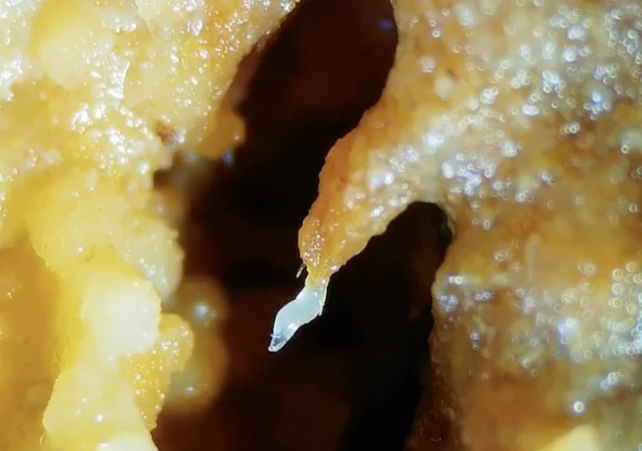Under the clinical sterility of glassware, life can do some rather curious things. Whether such behaviors are exclusive to laboratory environments or represent a common survival strategy is often a topic for heated debate.
One bizarre activity glimpsed in past lab experiments has now been recorded under natural conditions, proving once and for all that some worm species will construct towers from their own squirming bodies to catch a ride out of town when the going gets tough.
Positioning a digital microscope over rotting fruit, researchers from the Max Planck Institute of Animal Behavior in Germany watched the itty-bitty scavengers feed until it was time to migrate to greener pastures by climbing atop one another and stretching for the sky.

"I was ecstatic when I saw these natural towers for the first time," says animal behaviorist and senior author Serena Ding.
"For so long natural worm towers existed only in our imaginations. But with the right equipment and lots of curiosity, we found them hiding in plain sight."
Though rare, there are a few examples of animal collectives that link their bodies in creative ways to move around. Ants can make bridges and rafts, for example. Spider mites will sacrifice themselves in the centers of silk balls to help siblings flee on the breeze.
Tales of nematodes cooperating to rise above their rotting substrate to latch onto a passing fly have emerged from a handful of semi-natural observations and laboratory experiments.
As tempting as it is to simply accept worms into the exclusive club of meat architects, Ding and her colleagues felt evidence of the craft required a less synthetic setting.
So the researchers collected the decaying remains of apples and pears around the University of Konstanz in late summer and autumn, and took a close look at the species of Caenorhabditis nematodes squirming through the mush.

Their recordings captured the activity of a life stage known as a dauer – an alternative developmental condition that allows worms to survive harsh conditions. The tough teens of one nematode species had gathered around fine projections extending from the fruit's rotting flesh and stretched their bodies, swaying in unison or 'nictating' back and forth.
Selecting and placing towers in petri dishes for easier manipulation revealed it was not only possible for these structures to breach gaps in the fruit, but that dauers at the summits of the writhing scaffolds could grab onto landing fruit flies and take to the air.
"A nematode tower is not just a pile of worms," says biologist and lead author Daniela Perez. "It's a coordinated structure, a superorganism in motion."
Knowing at least some species of Caenorhabditis can work together to escape overcrowding or famine blurs the lines further between social organisms like bees, ants, and even ourselves.
With improvements in genetics tools and detailed knowledge of the conditions in which this collaboration arises, the researchers hope to study the complexity of the towers themselves, potentially even revealing degrees of diversity between those at the base and the high-flying penthouse dauers at the top.
"Our study opens up a whole new system for exploring how and why animals move together," says Ding.
This research was published in Current Biology.
